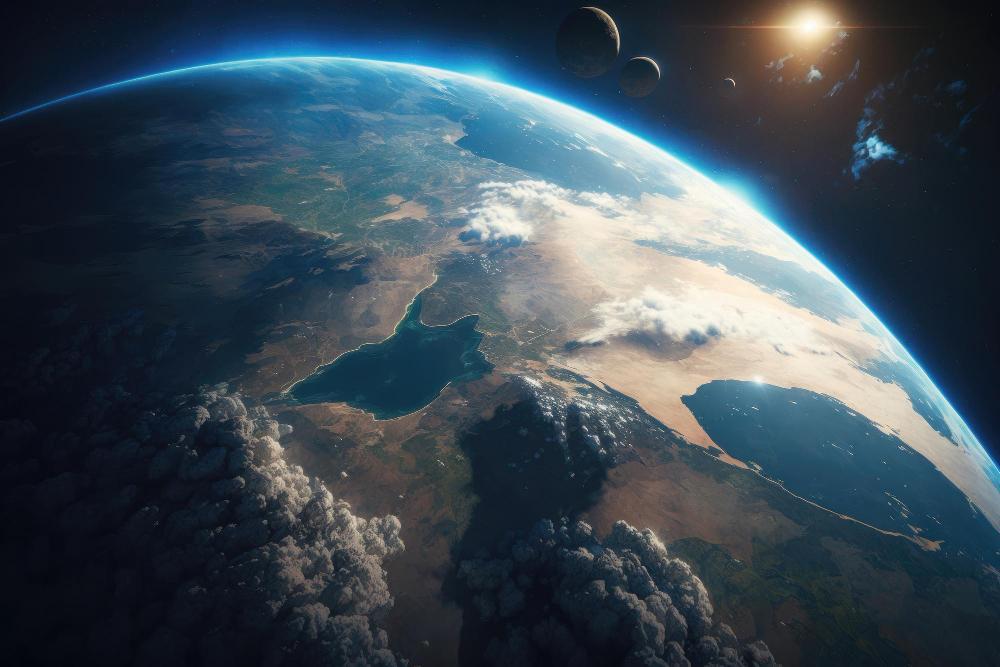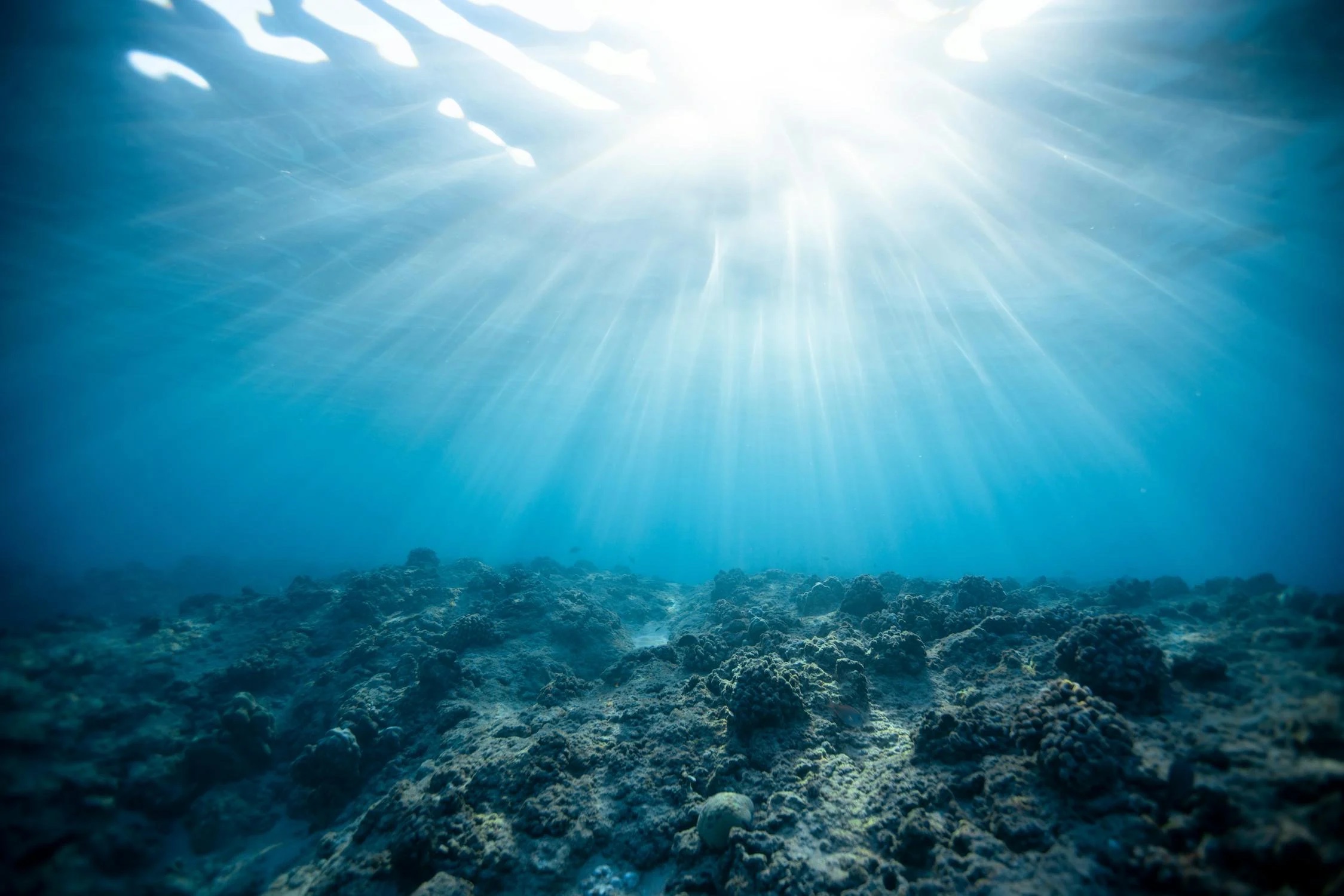Study Claims Ancient Planet Theia Is Inside Earth, Supporting the Theory About the Moon’s Creation
Scientists have made a groundbreaking discovery, providing compelling evidence that a celestial body collided with Earth shortly after its formation billions of years ago.
Experts believe enormous sections of another planet, known as Theia, are embedded deep inside the Earth between the African continent and the Pacific Ocean. This finding has the potential to redefine our understanding of the Earth’s early history.
Discovery of the Structures Under Africa
In the 1980s, geophysicists made an unusual discovery deep within the earth. They found evidence of two continent-sized structures buried beneath a stretch of land extending from the African continent to the Pacific Ocean.

Source: Wikimedia
The structures, larger than our moon, were named “large low-velocity provinces” of LLVPs, due to their unique characteristic of slowing down seismic waves, a feature attributed to their incredibly high iron content.
New Study Backs Up Old Theory
A new study conducted by Caltech researchers has provided compelling evidence supporting the theory that the two structures are the remnants of a planet that collided with Earth billions of years ago.

Source: Wikimedia
“Seismic images of Earth’s interior have revealed two continent-sized anomalies with low seismic velocities, known as the large low-velocity provinces (LLVPs), in the lowermost mantle,” explained the study authors.
The Composition of the Structures
According to the authors of the new study, they believe the material that comprises the two bruised structures is distinct from that which makes up the Earth’s mantle, suggesting they must have been embedded at a distant point in the past.

Source: Wikimedia
“The LLVPs are often interpreted as intrinsically dense heterogeneities that are compositionally distinct from the surrounding mantle,” they wrote.
Debris From Theia Formed the Moon
While it has long been theorized that the LLVPs are the remnants of Theia, no evidence of this celestial body has been found in the asteroid belt of meteorites, making it difficult to prove.

Source: Wikimedia
The new research aims to suggest that while a significant portion of Theia was absorbed into the forming Earth, the debris that resulted from the monumental impact led to the formation of our moon.
Geophysicist Comes Up With the Theory
This theory traces its origins back to a Caltech geophysicist, Qian Yuan, who had a so-called eureka moment during a seminar in 2019.

Source: Freepik
After listening to a talk on the giant-impact hypothesis and the Moon’s high iron content, Yuan began questioning if the LLVPs were formed from a colossal impact.
The Eureka Moment
Speaking of his revelation, Yuan said, “Right after Mikhail said that no one knows where the impactor is now, I had a ‘eureka moment’ and realized that the iron-rich impactor could have transformed into mantle blobs.”

Source: Wikimedia
After this, the geophysicist began conducting simulations that examined Theia’s chemical composition and what an impact on Earth would look like. Eventually, his results concluded that the LLVPs and the Moon could have been formed from this ancient collision.
Theia Merges With the Earth
Yuan, along with his colleague at Caltech, published their findings in a study titled “Moon-forming impactor as a source of Earth’s basal mantle anomalies.”

Source: Wikimedia
“Here we show that LLVPs may represent buried relics of Theia mantle material (TMM) that was preserved in proto-Earth’s mantle after the Moon-forming giant impact,” wrote the researchers.
Structures Formed by Ancient Collision
Yuan notes that several parts of Theia merged with our planet’s mantle, eventually forming the two enormous structures observed today.

Source: Wikimedia
“Our canonical giant-impact simulations show that a fraction of Theia’s mantle could have been delivered to proto-Earth’s solid lower mantle,” wrote the researchers.
Why Didn’t the Remnants of Theia Blend With the Earth?
Later, the researchers decided to question why the remnants of Theia didn’t blend with the Earth’s mantle instead of forming two unusual blobs. They discovered that most of the energy from the collision was concentrated in the upper mantle.

Source: Freepik
This allowed the lower mantle to remain much cooler than previously theorized. The cooler temperature allowed the remnants of the celestial body to clump together, forming two structures.
Theia Didn’t Melt Away
Since the impact did not completely melt the lower mantle, the blobs of iron-rich material from Theia stayed largely intact as they shifted down to the base of the mantle.

Source: Toby Elliott/Unsplash
If the lower mantle had been hotter, then it would have mixed with the remains of Theia more thoroughly and looked like the color of a stirred pot of paints.
Hot Peanut Butter
“Earth’s mantle is rocky, but it isn’t like solid rock,” said Dr. Steve Desch, a study co-author and professor of astrophysics at Arizona State’s School of Earth and Space Exploration, (via CNN).

Source: Freepik
“It’s this high-pressure magma that’s kind of gooey and has the viscosity of peanut butter, and it’s basically sitting on a very hot stove.”
The Implications of the Study
Speaking on the implications brought forth by the recent study, Professor Paul Asimow explains, “A logical consequence of the idea that the LLVPs are remnants of Theia is that they are very ancient.”

Source: Wikimedia
“It makes sense, therefore, to investigate next what consequences they had for Earth’s earliest evolution, such as the onset of subduction before conditions were suitable for modern-style plate tectonics, the formation of the first continents, and the origin of the very oldest surviving terrestrial minerals.”
Evidence to Support the Theory
Yuan and his Caltech colleagues’ simulations, coupled with the rock samples taken from the Moon and Earth, have provided compelling evidence to back up the collision theory.

Source: Freepik
Researchers now believe they have credible evidence to suggest that the two structures embedded under the African continent and the formation of the Moon may have resulted from Theia crashing into our planet billions of years ago.
Is Theia at the Core of Earth?
Molten slabs of Theia could have embedded themselves within the Earth’s mantle after impact before they were solid. This would have left portions of the ancient planet’s material resting above the core, nearly 1,800 miles below the surface.

Source: Freepik
If this theory is correct, then it would provide additional details to fill out a long-standing hypothesis about part of Earth’s origins.
Supporting the Theory
While this could be a very real explanation, it remains just a theory based on a widely accepted idea that a Mars-sized body, often referred to as Theia, collided with early Earth around 4.5 billion years ago.

Source: Wikimedia
Recent simulations, such as those in the Caltech study, and evidence from lunar and Earth rock samples support this theory.
Fission Theory
The fission theory suggests that the Moon formed from the Earth itself. According to this theory, the Moon was separated from the Earth early in the planet’s history.

Source: Wikimedia
This event is theorized to have happened when the Earth was incredibly young and spinning rapidly. The idea is that the Earth’s rotational speed was so high that a piece broke away due to centrifugal forces.
A Missing Chunk from the Pacific Basin
Advocates of the fission theory argue that the Pacific Basin, which includes the Pacific Rim, might be the cause of this colossal event that shaped our current world.

Source: Jeremy Bishop/Pexels
The Pacific Basin is the largest and deepest part of the world’s oceans, extending from the Arctic Ocean to the Southern Ocean.
The Theory Proposed by Darwin
Fission theory was first proposed by George Darwin, the son of Charles Darwin, in the 19th century. He believed that centrifugal force flung the Moon out of the Earth’s oceanic crust.

Source: NASA
This theory also attempts to explain why the Moon’s composition is strikingly similar to the Earth’s crust.
Not a Popular Theory
Over time, this theory has lost support because it does not adequately account for the angular momentum of the Earth-Moon system.

Source: Freepik
It also does not provide a satisfactory explanation for the incredible amount of energy required to eject a large mass from the Earth to form the Moon.
Another Reason to Reject Fission Theory
Another reason modern researchers and the public have largely rejected fission theory is that contemporary science and space exploration have demonstrated that an impact between the Earth and another planet formed the Moon.

Source: Wikimedia
This hypothesis not only explains why the Moon shares many of Earth’s qualities, but it better fits the geological and isotopic evidence found through the study of lunar rocks and the Earth’s crust.
Capture Theory
The capture theory suggests that the Moon originated elsewhere in the solar system and that Earth’s gravity later pulled it into its orbit.

Source: Wikimedia
However, many people less widely accept this hypothesis because capturing a large object like the Moon would be unlikely without significant atmospheric drag or the influence of other celestial bodies to slow it down.
Two Planet Theory
The double planet hypothesis proposes that the Earth and Moon originated together as a dual system from the Sun’s primordial accretion disk.

Source: Space Frontiers/Space Frontiers/Getty Images
However, the compositional differences between the Earth and Moon present challenges to this theory.
The Most Likely Theory
This theory suggests that several smaller bodies collided with the early Earth, resulting in the formation of multiple moonlets that eventually merged to create the Moon.

Source: Wikimedia
Although the giant-impact hypothesis is still the leading explanation due to its success in accounting for many of the Earth-Moon system’s physical and chemical characteristics, researchers continue to explore and refine our understanding of the Moon’s origins.
